A small shady backyard doesn’t mean you can’t have a beautiful garden. Here are small evergreen plants for shade: use them to create your dream garden.

These evergreen plants thrive in shady areas (from deep to dappled shade) and add a touch of beauty to your landscape. And whether you have a small garden or a large shady spot, these plants and shade-tolerant shrubs will make a statement.
Small Evergreen Plants For Shade
Blooming evergreens
I love a shade garden filled with colorful flowers, especially if they are perennials, so they return on their own without much work on my part. Here are some amazing flowering evergreens to try in your shade garden.
Mountain Laurel (Kalmia latifolia)
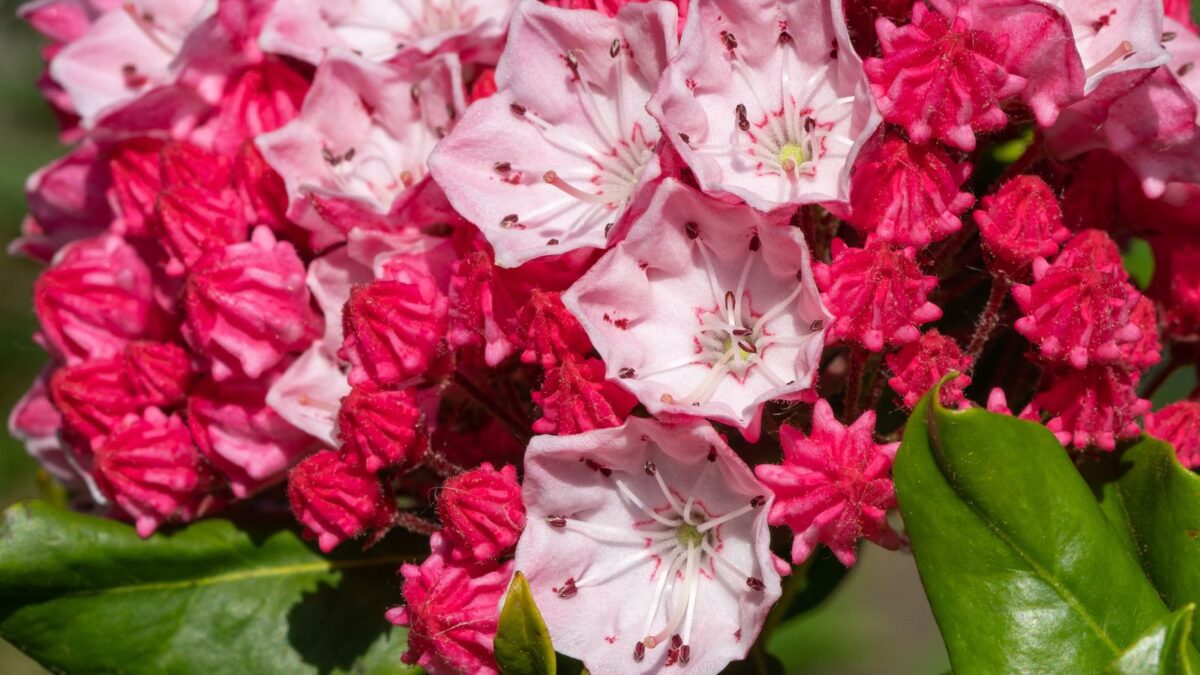
Native to the eastern United States, Mountain Laurel is a small evergreen tree with glossy green leaves that blooms in late spring. It thrives in full shade and requires moist soil. Its beautiful pink flowers and dark green foliage make it popular for any shaded garden.
Mountain Laurel is also a good choice for areas that receive strong winds, as it has sturdy branches of evergreen color that can withstand the elements.
Dwarf Forsythia (Forsythia viridissima ‘Bronxensis’)
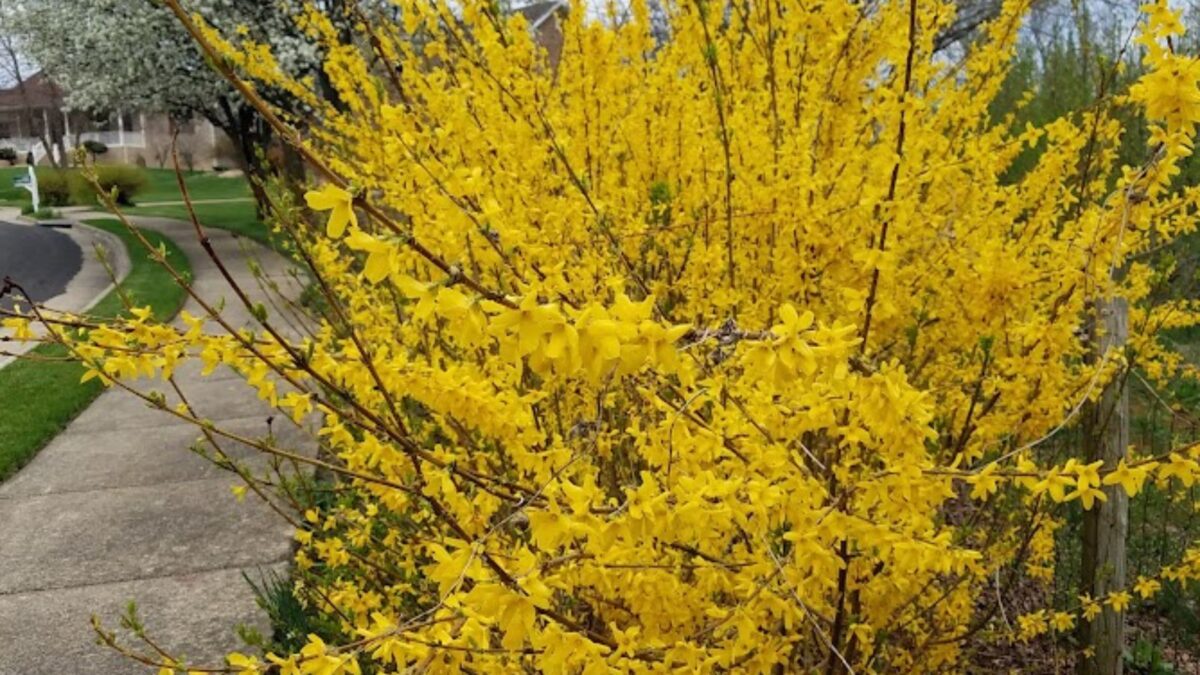
There are dwarf varieties of forsythia that produce yellow flowers in early spring before the leaves emerge. The compact size makes them suitable for smaller landscapes.
And while forsythias love full sun, they’ll tolerate light shade and put out fewer blooms.
Dwarf Yellow Rhododendron (Rhododendron spp.)
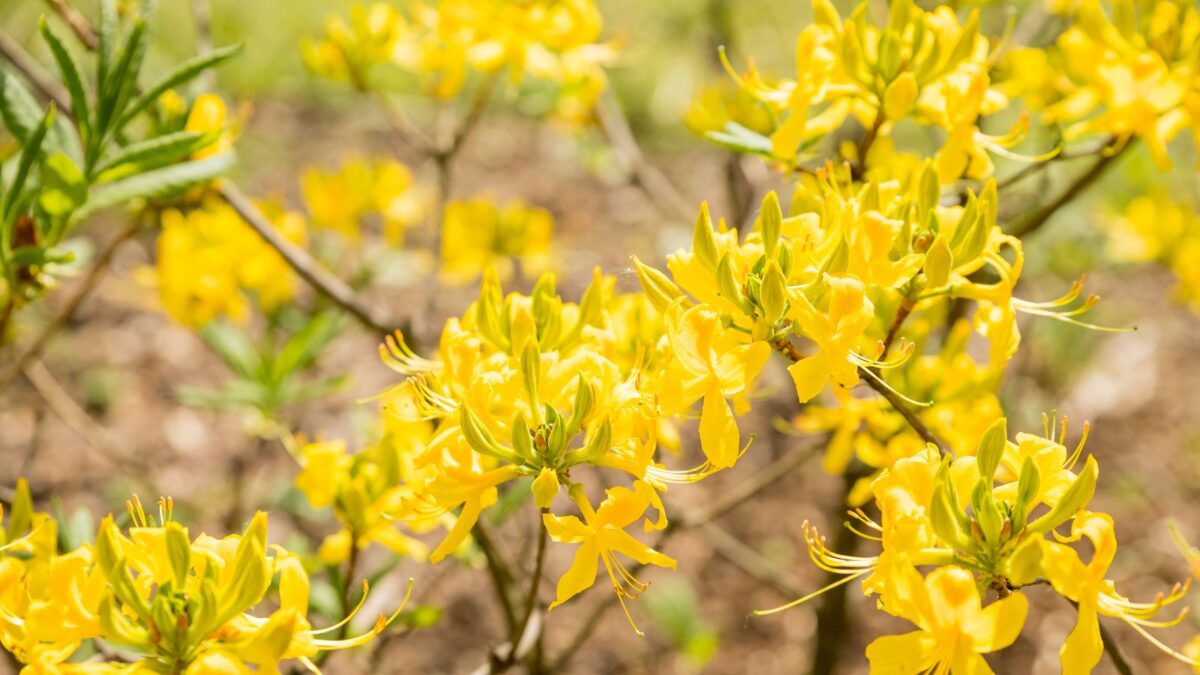
Some dwarf rhododendron varieties produce yellow flowers. These plants offer both attractive flowers and evergreen foliage.
Dwarf Hollies
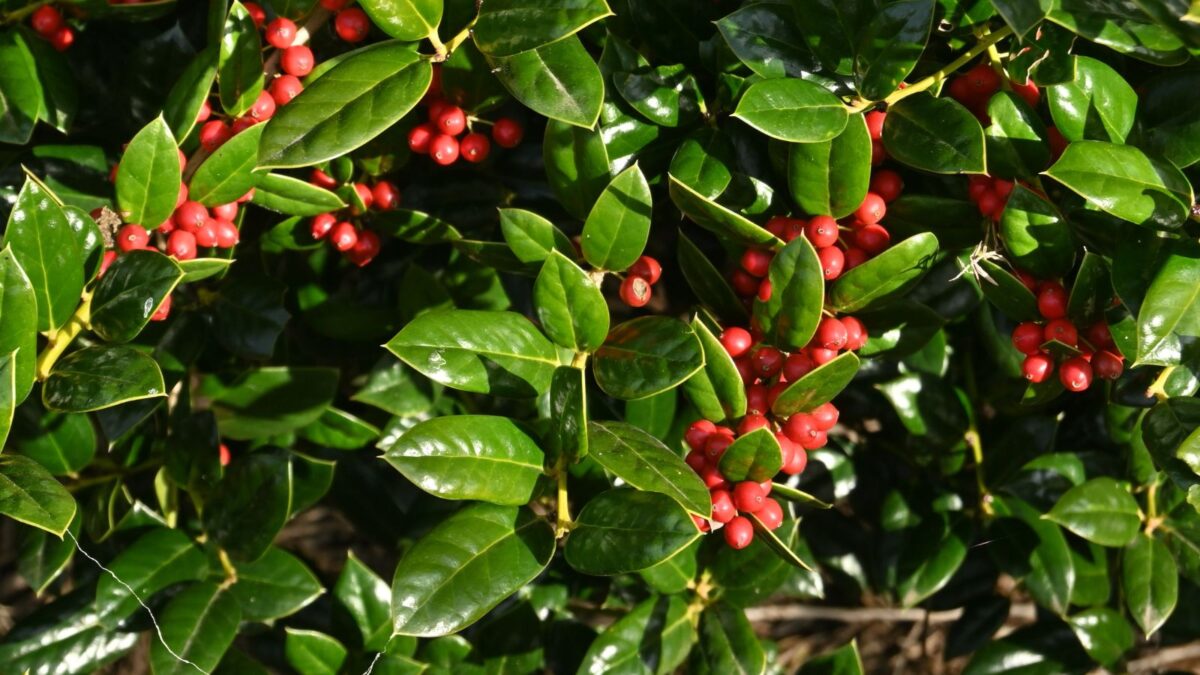
Dwarf versions of Chinese holly (Ilex cornuta) and Japanese holly (Ilex crenata) are great options for landscaping projects.
Dwarf burford is the smaller version of Chinese holly that grows no higher than 4 feet tall and 8 feet across. Its leaves resemble Christmas holly, are up to 4 inches long, and have five sharp points or spines.
Chinese hollies generally produce red berries, but this is rare with the dwarf variety. The dwarf pagoda is a smaller version of the Japanese holly. Its small, rounded leaves form compact rosettes. The shrub grows up to 2 feet tall. It is commonly used to create bonsai or topiary designs. Dwarf burford is hardy up to Zone 6, and dwarf pagoda is hardy up to Zone 5.
Dwarf evergreens
Dwarf evergreens add texture, shape, and color to gardens. These small shrubs may grow up to 18 inches and do it at a slower rate than normal-sized plants.
There are over many different shapes of dwarf evergreens. Some of the most common dwarf evergreen plant formations are:
- narrow pyramid
- pendulous pyramid
- irregular
- weeping
Dwarf evergreen foliage comes in various colors, such as maroon, gold, green, white, and blue.
They are low-maintenance plants that require sporadic pruning and do well, lining the foundations of buildings, defining garden corners, and enhancing winter landscapes with bold colors. Many landscapers use dwarf evergreens to complement windows, garden ponds, or entryways.
Deciduous shrubs
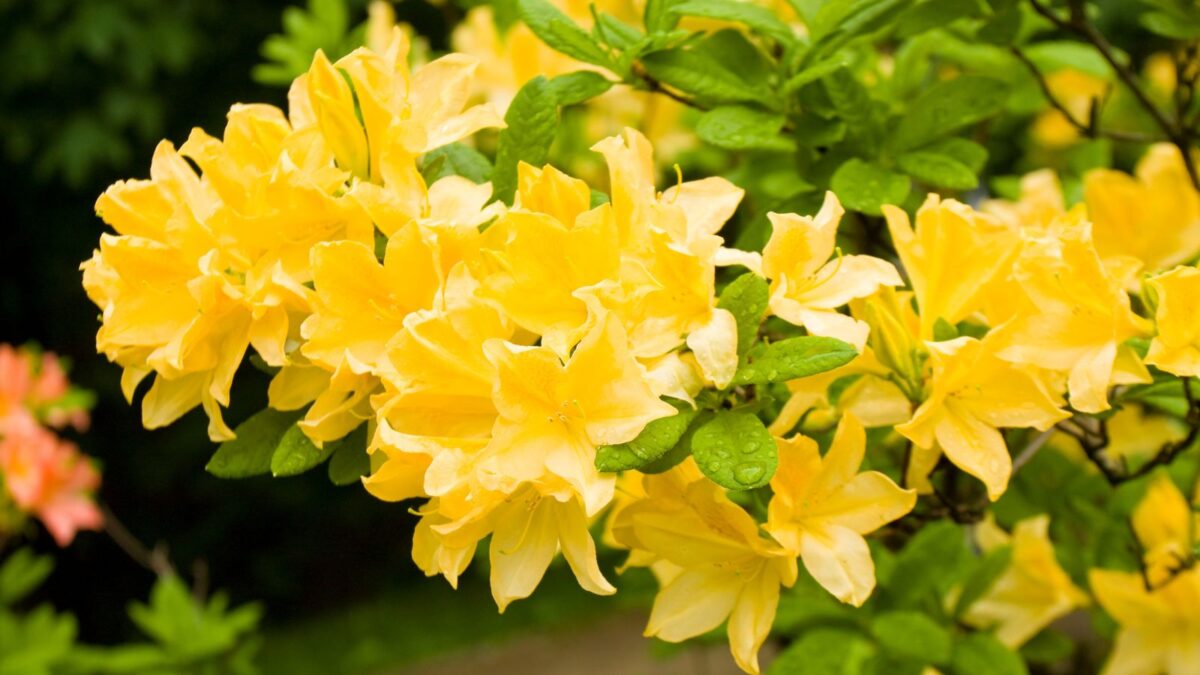
If you’re looking for a variety of slow-growing shrubs in your shade garden, consider adding some deciduous shrubs. These plants lose their leaves during winter but provide beautiful foliage in warmer seasons.
Some popular options for shady areas include Rhododendrons and Azaleas (this gumpo dwarf azalea with white flowers is gorgeous!). These shrubs have dark green leaves and produce clusters of fragrant flowers in early summer, making them a delightful addition to any shade garden.
Ground covers

In addition to trees and shrubs, there are many ground cover options for shady areas.
Japanese Pachysandra, a low-growing evergreen plant with broad-leaf foliage, thrives in light shade and moist soil, making it an excellent choice for small gardens or as a foundation planting. Its dark green leaves add a touch of elegance to any landscape.
Creeping juniper
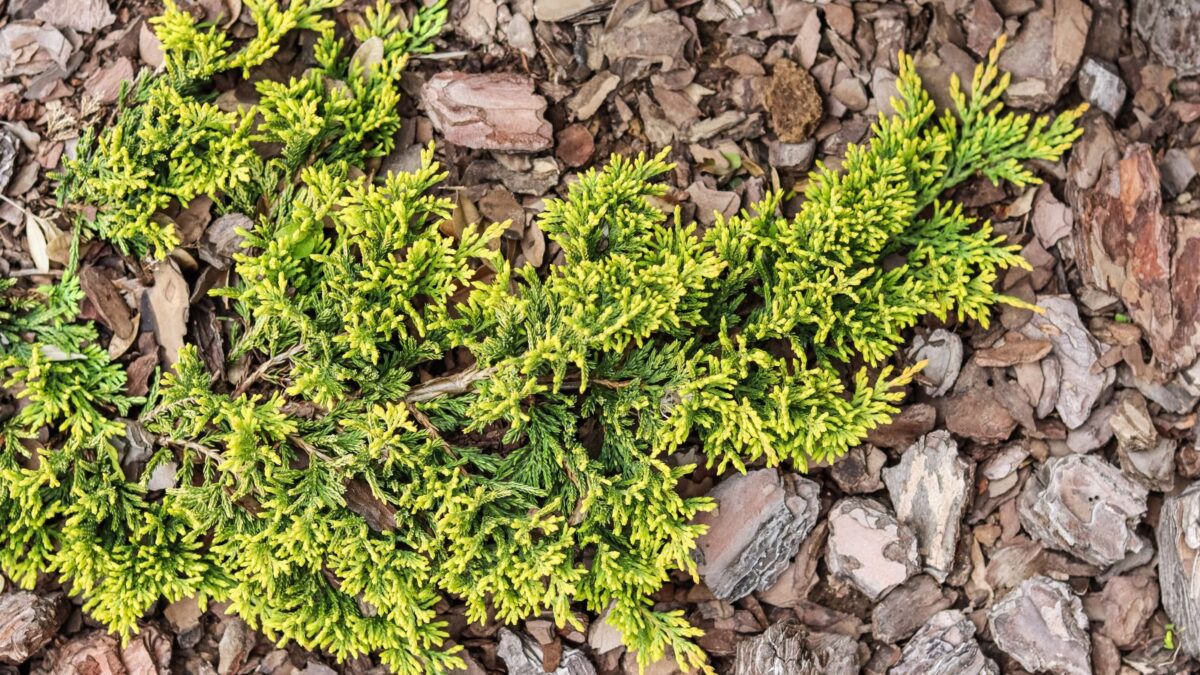
Junipers do not only grow as tall trees. Hundreds of varieties of low maintenance junipers exist including creeping junipers (Juniperus horizontalis) that rarely exceed a height of 18 inches. They spread horizontally and are effective groundcovers in landscape designs. You can also grow these plants in pots if you want to keep them compact.
Creeping junipers have soft needles that form scale-like mats and may grow as far north as zone 3. They are also sometimes used as bonsai trees.
Several varieties change color in the winter. For example:
- the gold strike cultivar changes from light green to bright yellow.
- the andorra variety changes from light green to plum
- the blue chip cultivar changes from silvery-blue to purple.
Other shade ground covers you might want to try:
- sweet woodroof (Galium odoratum) – deer-resistant and rabbit proof
- creeping phlox (Phlox stolonifera) – beautiful, low-maintenance ground cover available in many colors
- bugleweed (Ajuga reptans) – its foliage looks good all year
- big blue lilyturf (Liriope muscari ‘Big Blue’) – beautiful purple flowers, but it can be invasive in some areas, so check before planting in your backyard
- creeping thyme (Thymus serpyllum) – thrives in poor soil
- gardenia (Gardenia jasminoides ‘Radicans variegata’) – has white scented flowers that smell heavenly!
- burning love Japanese Leucothoe (Leucothoe keiskei ‘Burhing Love’) – this one has gorgeous foliage year round
Miniature evergreen shrubs
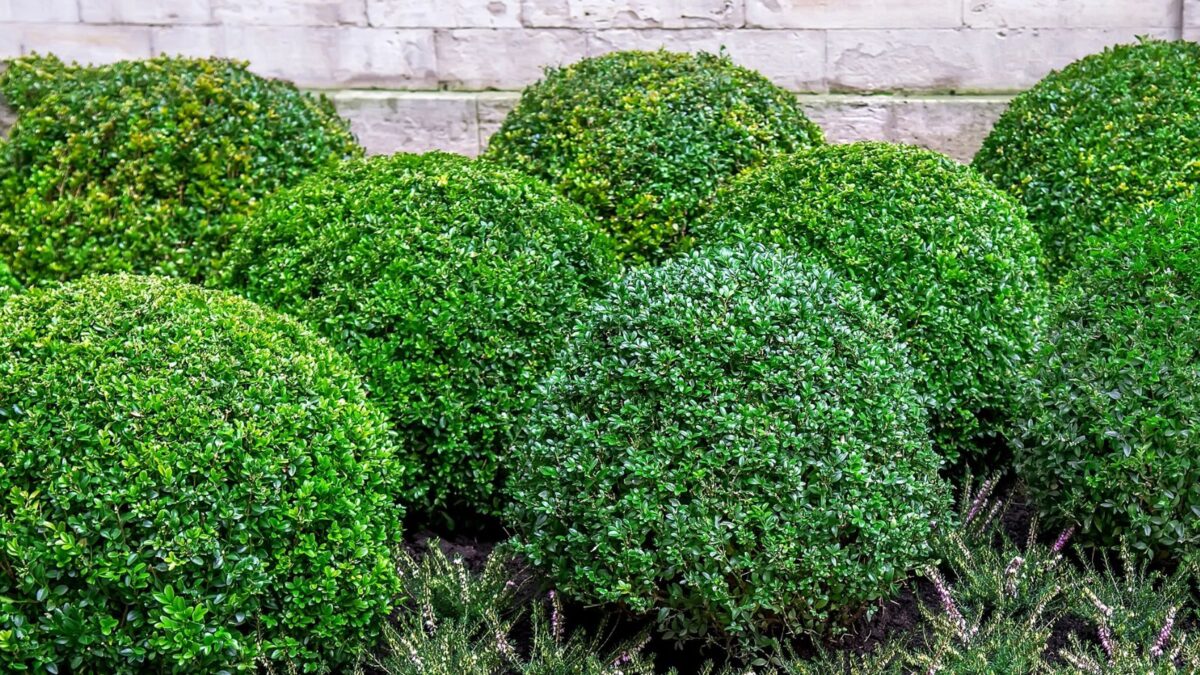
If you’re looking to add some height to your shady garden, consider planting small shrubs. One notable option is the Boxwood, a broadleaf evergreen with dense foliage.
Boxwoods are versatile plants that thrive in both full shade and part shade conditions. They are also known to withstand strong winds and adapt well to different soil types. With their evergreen leaves and compact growth habit, they are the perfect choice for any size garden.
Dwarf or miniature evergreens have many uses in the landscape. They can be planted in perennial flower borders to provide evergreen color, setting off the flowers’ vibrant colors. Put miniature evergreens in small rock gardens, near foundations or in the front row of a mixed evergreen shrub border.
Little Gem Norway Spruce (Picea abies Little Gem)
A miniature cultivar of Norway spruce, Little Gem grows just a foot high, with a rounded form. It has dark green needles and a dense growth habit. Little Gem grows just ½ to one inch per year. It is rated through U.S. Department of Agriculture hardiness zone three.
White Tip Cedar (Cedrus Deodara White Imp)
A pyramidal-shaped evergreen, White Imp cedar slowly grows to three feet tall and three feet wide. Unlike other cedar varieties with grayish-green needles, White Imp has green and white variegated foliage. Cedars are reliably hardy through USDA zone three.
Gentsch White Canadian Hemlock (Tsuga canadensis Gentsch White)
The Canadian hemlock Gentsch White can be kept at half this size when sheared regularly growing only four feet tall by four feet wide if never pruned. Gentsch White grows best in partial shade and evenly moist, well-drained soil. This evergreen cultivar has exceptional winter interest because the new growth from the previous spring becomes creamy-white during fall and winter, standing out against the dark green older foliage.
Dwarf evergreen trees
Dwarf varieties of evergreen trees originate in various ways: crossbreeding of cultivars by plant developers, grafting onto a dwarf rootstock, or, naturally, through evolution in harsh climate or soil conditions.
The miniature evergreen specimens are ideal for small yards: they maintain their beauty while other trees are dormant. Dwarf evergreens provide year-round protection and habitat for birds and other wildlife and, in some cases, provide berries for their sustenance, encouraging them to visit your yard.
Evergreens with Needles
When imagining a dwarf evergreen, you probably picture a Christmas tree small enough to fit in a house. Conifers comprise a plant group with one of the largest collections of dwarf cultivars.
Whether in the shape of a narrow spire, a pyramid, or a roundish mound, a needled evergreen adds interest to the landscape. Plus, the diminutive size and slow-growth pattern of dwarf conifers make them easy to transplant if you are not pleased with their original placement.
In U.S. Department of Agriculture plant hardiness zones 2 through 6, a dwarf Alberta spruce (Picea glauca albertiana “Conica”) can offer entrance-way charm.
The “Golden Mop” sawara cypress (Chamaecyparis pisifera “Golden Mop”) is a favorite in USDA zones 4 to 8.
Featuring blue-gray foliage, the compact white fir (Abies concolor “Compacta”) thrives in USDA zones 5 to 10.
Leafy evergreens
Other evergreens, typically associated with hedges, include privet, boxwood, and hollies.
Boasting late-summer flowers, followed by berries, dwarf Japanese privet (Ligustrum japonicum “Rotundifolium”) will flourish in USDA zones 7 to 10.
The popular dwarf boxwood (Buxus microphylla “Winter Gem”) puts on a bronze tint during the cold months in USDA zones 5 to 9.
Two hollies that combine attractive foliage with winter berries, inkberry (Ilex glabra “Shamrock”) and Japanese holly (Ilex crenata “Convexa”), grow to only 5 feet tall. “Convexa” thrives in USDA zones 6 to 10, while “Shamrock” will grow in these zones and also in USDA zone 5.
How To Use Small Evergreens In Your Landscape
- As foundation planting – place dwarf evergreens near your home’s foundation to provide a low-maintenance and attractive border that will add color variation and create a cohesive look.
- In rock gardens – create contrast against rocks, gravel, or other hardscape elements in a rock garden.
- Add them to container gardens: Plant dwarf evergreens in containers and place them on patios, decks, or entryways. This allows you to move them around for seasonal interest and provide a mobile touch of greenery.
- Create a focal point – use a single or a group of dwarf evergreens as focal points in your landscape design to draw the eye and anchor the other plants.
- Under-story planting – plant small evergreens under larger trees or taller shrubs to create layers of interest. They can provide year-round color and structure in areas lacking visual appeal.
- Winter interest – the evergreen plants’ green foliage stands out against a snowy backdrop, bringing life to the garden during the colder months.
Adding evergreen plants to your shady garden can transform it into a lush and vibrant oasis. From small trees to ground covers and small shrubs, there are plenty of options to choose from. Consider the soil type, light conditions, and winter hardiness when selecting the plants for your shade garden. With careful planning and the right choices, you can create a beautiful, low-maintenance shade garden that will thrive throughout the year.
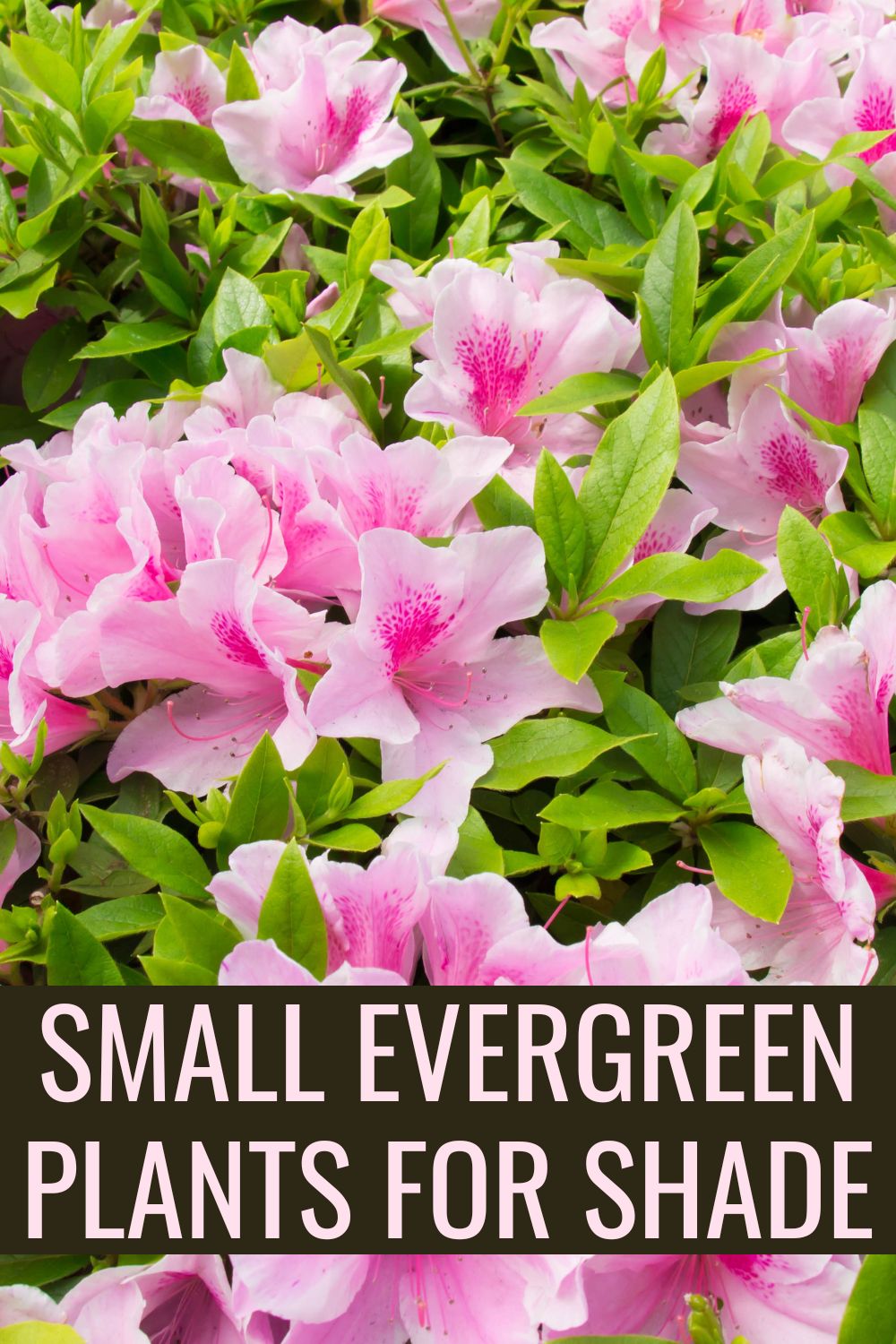

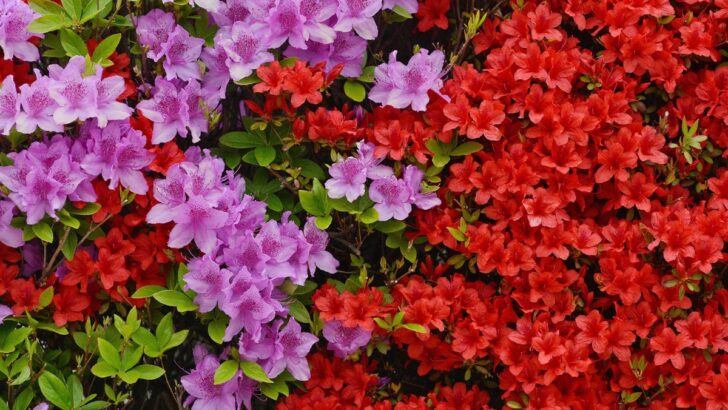







![Greenwood Nursery/Live Ground-Cover Plants - Japanese Spurge + Pachysandra Terminalis - [Qty: 25 Bare Roots] - (Click for More Options/Quantities) Greenwood Nursery/Live Ground-Cover Plants - Japanese Spurge + Pachysandra Terminalis - [Qty: 25 Bare Roots] - (Click for More Options/Quantities)](https://m.media-amazon.com/images/I/51VGMbsuxqL._SL500_.jpg)


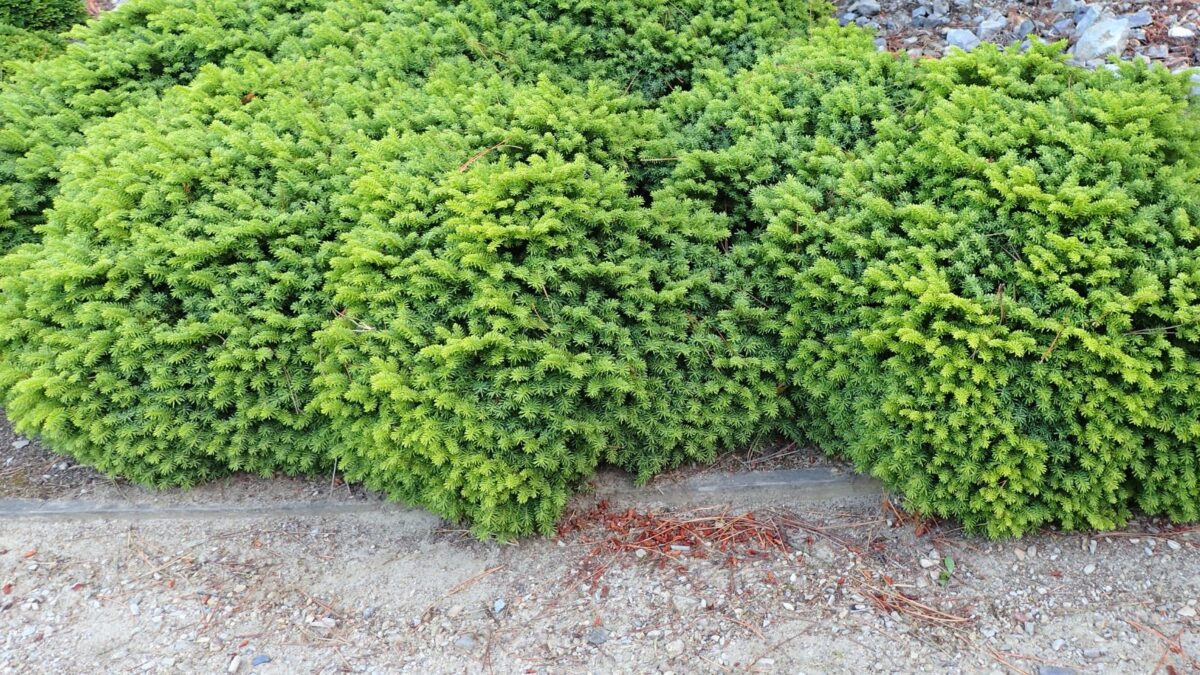






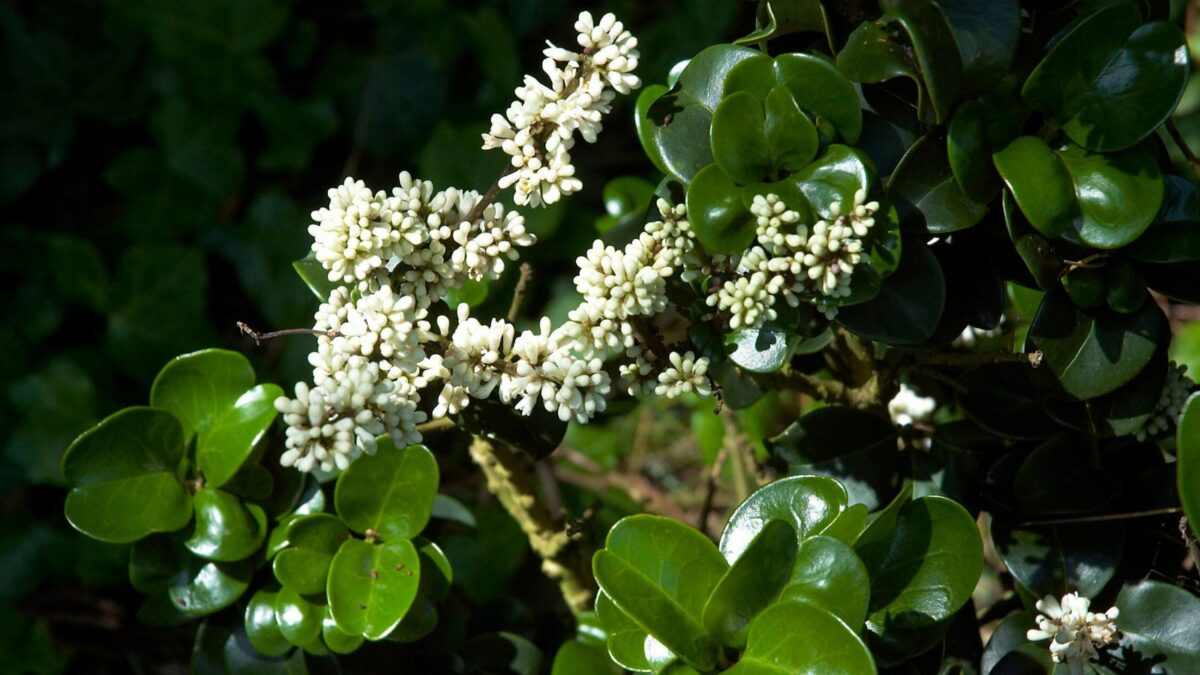




11 Shade Loving Plants You'll Love
Monday 14th of August 2023
[…] If you have a small garden you may need a few of these dwarf evergreens for shade. […]
10 Woodland Shade Garden Ideas To Transform Your Tree-Filled Yard
Monday 14th of August 2023
[…] the space feels overwhelming, some low-growing, shade-loving groundcovers or small evergreen plants can replace some of the lawn, especially on steep slopes that pose a landscaping […]
Cathy's Beautiful Shade Garden
Monday 14th of August 2023
[…] Depending on the amount of shade, you’ll need to choose the types of plants that can handle that shade. […]